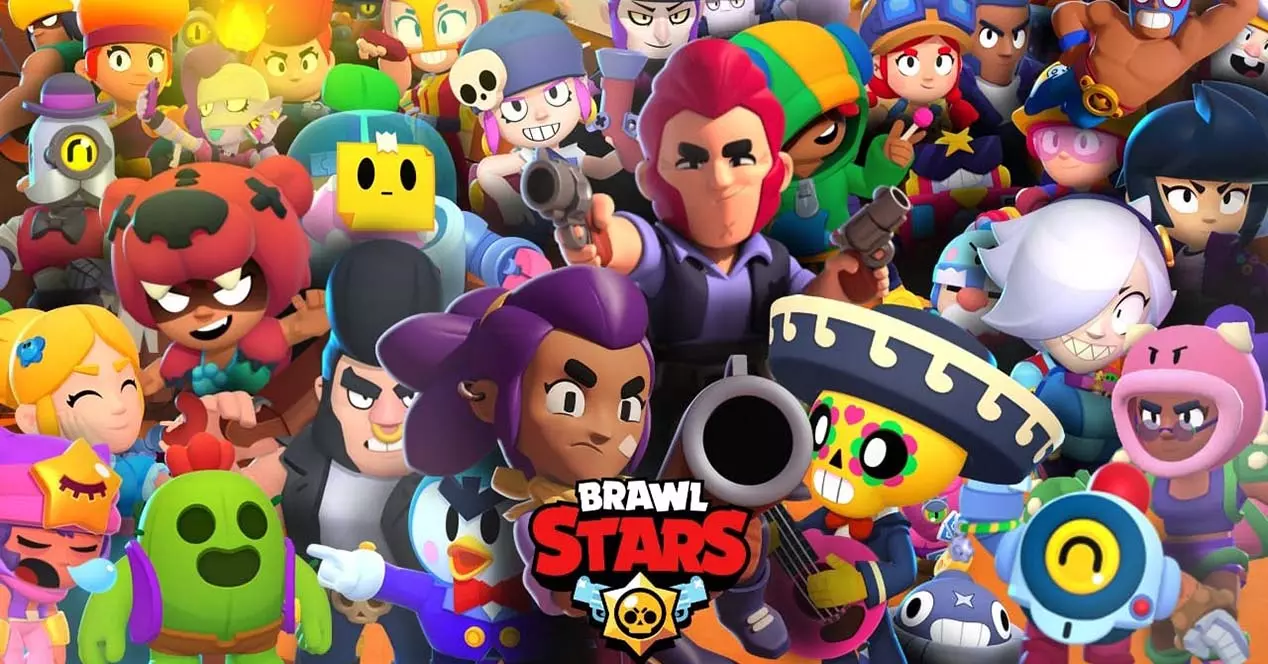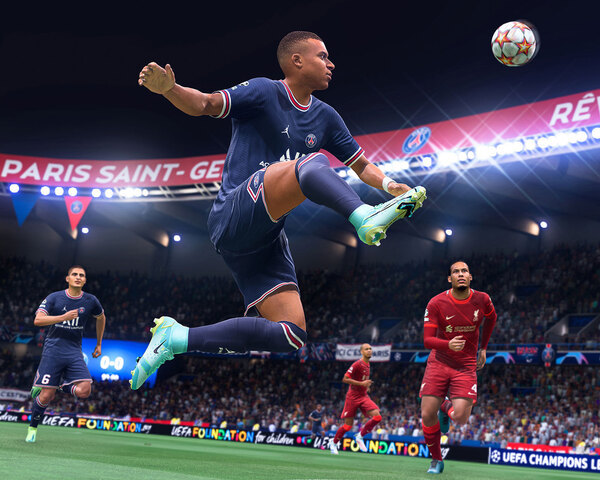Advertisement
Popular Now
Introduction
Fortnite’s late-game is where the true test of skill begins. As the storm shrinks, players are forced into tighter areas, making combat inevitable. Understanding the strategies to survive and win these final moments is crucial. In this article, we’ll dive deep into specific late-game strategies to improve your chances of victory, focusing on positioning, build management, and situational awareness.
Understanding the Importance of Positioning
Positioning becomes key as the circle closes. At this point, players are usually within a small area, which means it’s easier to get third-partied or trapped in a bad situation. Where you place yourself on the map matters more than ever.
[caption id="attachment_1638" align="aligncenter" width="600"] Positioning becomes key as the circle closes[/caption]
In the late-game, high ground gives a distinct advantage. With fewer opponents left, controlling the high ground allows you to spot enemies early and forces them into difficult situations. Players below will have to waste materials building up or leave themselves exposed trying to rotate.
However, timing when to take the high ground is important. Too early, and you might become a target. It’s often better to secure a position near the edge of the storm to catch players rotating in, then work your way upward when the moment is right.
Mastering Rotations in Tight Spaces
Late-game rotations are tricky because the play area is smaller, and everyone is moving at once. Unlike the early game, where players rotate to find loot, these rotations are all about survival.
Use natural cover or previously built structures to move safely from one area to another. Avoid running in the open, where you’re a target for snipers. Building tunnels (also known as "tarping") is a key rotation strategy, especially in competitive play. Tarping allows you to move forward without exposing yourself and limits the damage you might take.
Another trick is to "shadow" other players' rotations. Follow their builds or movement paths, letting them be the primary target while you move safely behind. But be careful - if you follow too closely, you could end up in a fight.
Build Management: Materials and Timing
One of the most overlooked aspects of Fortnite’s late game is build management. By the end game, you should have gathered enough materials, but how you use them is critical.
Conserving materials becomes a balancing act. You need to protect yourself, but over-building can leave you vulnerable later. Focus on using just enough material to defend against threats and rotate safely. For instance, instead of using full metal walls all the time, switch to wood or brick for less critical structures.
Knowing when to rebuild and when to rely on pre-existing structures is another key factor. If there’s an opportunity to take cover in an already built area, use it. Save your materials for moments when you absolutely need to build.
Awareness of Opponent Positions
Late-game survival often comes down to knowing where other players are. By keeping track of opponents' positions, you can avoid unnecessary fights or plan your moves carefully.
A key technique is to watch for visual and audio cues. Footsteps, gunfire, or even building sounds give away nearby enemies. You can also use the storm’s edge to your advantage - players are often forced out of hiding, making them easier to track.
Constantly checking your surroundings and rotating your camera helps prevent sneak attacks. This situational awareness can be the difference between life and death in those last few circles.
Storm Management and the Closing Circle
The shrinking storm circle is one of the biggest challenges in Fortnite’s late game. Managing your position relative to the storm is critical to avoid taking damage or being trapped.
As the storm closes, avoid being too close to its edge. Players will often be waiting to ambush those trying to escape the storm. On the other hand, staying too far ahead of the circle can put you in the middle of multiple engagements.
The key is finding a balance - staying just inside the safe zone but near enough to the edge to monitor enemy rotations. This allows you to avoid unnecessary fights and stay ahead of incoming threats.
Timing Your Engagements
Engaging with other players at the right time is a fundamental part of late-game strategy. Going for early eliminations can make you a target, while waiting too long might leave you in a disadvantageous position.
The best approach is to pick your fights wisely. Wait until an opponent is vulnerable, such as when they’re healing or rotating. This gives you the upper hand without drawing too much attention to yourself.
In the late game, third-partying - attacking a player who’s already in a fight - is also an effective way to secure eliminations while minimizing risk. But again, timing is key. Jump in too soon, and you may find yourself in the middle of a chaotic battle.
Adapting to Final Circle Variations
The final circles in Fortnite vary greatly depending on the terrain. Whether it’s a hilly landscape, urban setting, or open field, each presents unique challenges.
[caption id="attachment_1639" align="aligncenter" width="600"]
Positioning becomes key as the circle closes[/caption]
In the late-game, high ground gives a distinct advantage. With fewer opponents left, controlling the high ground allows you to spot enemies early and forces them into difficult situations. Players below will have to waste materials building up or leave themselves exposed trying to rotate.
However, timing when to take the high ground is important. Too early, and you might become a target. It’s often better to secure a position near the edge of the storm to catch players rotating in, then work your way upward when the moment is right.
Mastering Rotations in Tight Spaces
Late-game rotations are tricky because the play area is smaller, and everyone is moving at once. Unlike the early game, where players rotate to find loot, these rotations are all about survival.
Use natural cover or previously built structures to move safely from one area to another. Avoid running in the open, where you’re a target for snipers. Building tunnels (also known as "tarping") is a key rotation strategy, especially in competitive play. Tarping allows you to move forward without exposing yourself and limits the damage you might take.
Another trick is to "shadow" other players' rotations. Follow their builds or movement paths, letting them be the primary target while you move safely behind. But be careful - if you follow too closely, you could end up in a fight.
Build Management: Materials and Timing
One of the most overlooked aspects of Fortnite’s late game is build management. By the end game, you should have gathered enough materials, but how you use them is critical.
Conserving materials becomes a balancing act. You need to protect yourself, but over-building can leave you vulnerable later. Focus on using just enough material to defend against threats and rotate safely. For instance, instead of using full metal walls all the time, switch to wood or brick for less critical structures.
Knowing when to rebuild and when to rely on pre-existing structures is another key factor. If there’s an opportunity to take cover in an already built area, use it. Save your materials for moments when you absolutely need to build.
Awareness of Opponent Positions
Late-game survival often comes down to knowing where other players are. By keeping track of opponents' positions, you can avoid unnecessary fights or plan your moves carefully.
A key technique is to watch for visual and audio cues. Footsteps, gunfire, or even building sounds give away nearby enemies. You can also use the storm’s edge to your advantage - players are often forced out of hiding, making them easier to track.
Constantly checking your surroundings and rotating your camera helps prevent sneak attacks. This situational awareness can be the difference between life and death in those last few circles.
Storm Management and the Closing Circle
The shrinking storm circle is one of the biggest challenges in Fortnite’s late game. Managing your position relative to the storm is critical to avoid taking damage or being trapped.
As the storm closes, avoid being too close to its edge. Players will often be waiting to ambush those trying to escape the storm. On the other hand, staying too far ahead of the circle can put you in the middle of multiple engagements.
The key is finding a balance - staying just inside the safe zone but near enough to the edge to monitor enemy rotations. This allows you to avoid unnecessary fights and stay ahead of incoming threats.
Timing Your Engagements
Engaging with other players at the right time is a fundamental part of late-game strategy. Going for early eliminations can make you a target, while waiting too long might leave you in a disadvantageous position.
The best approach is to pick your fights wisely. Wait until an opponent is vulnerable, such as when they’re healing or rotating. This gives you the upper hand without drawing too much attention to yourself.
In the late game, third-partying - attacking a player who’s already in a fight - is also an effective way to secure eliminations while minimizing risk. But again, timing is key. Jump in too soon, and you may find yourself in the middle of a chaotic battle.
Adapting to Final Circle Variations
The final circles in Fortnite vary greatly depending on the terrain. Whether it’s a hilly landscape, urban setting, or open field, each presents unique challenges.
[caption id="attachment_1639" align="aligncenter" width="600"] As the storm closes, avoid being too close to its edge[/caption]
In hilly areas, controlling the high ground is even more crucial. In an urban setting, vertical combat becomes more intense, with players constantly building upwards to secure vantage points. Open fields, on the other hand, rely heavily on smart building and quick reactions to avoid gunfire.
Learning to adapt your strategy based on the final circle’s terrain is essential. Players who can quickly change their approach depending on the environment will have a better chance of success.
Healing and Resource Management
By the late game, healing items become as important as your weaponry. Managing your health and shield is critical, especially as you move into the final circle.
It’s important to keep track of your health and make sure you’re always as close to full health as possible. Healing under pressure is challenging, but doing so at the right time can save your life. Carry items like medkits, chug splashes, or minis, and use them wisely.
Knowing when to heal versus when to fight is another balance to strike. If you’re caught in a fight with low health, healing might be more important than continuing to attack.
Weapon Selection for the Late Game
In the late game, the weapons you carry will have a major impact on your performance. Shotguns and SMGs become extremely valuable for close-range combat, while snipers and assault rifles take a backseat unless you have the high ground.
It’s important to assess your loadout before heading into the final circles. Swap out unnecessary weapons for ones that will help you in tight spaces, and make sure you have enough ammo to last through the intense final fights.
Choosing weapons that fit your playstyle is key. Aggressive players might prefer a shotgun-heavy loadout, while more defensive players could opt for a balanced approach with healing items.
Remaining Calm Under Pressure
Fortnite’s late-game moments are stressful, and staying calm under pressure is often the deciding factor between winning and losing.
Breathing techniques and focusing on small goals - like staying in the safe zone or reaching the next piece of cover - can help you maintain composure. Panicking leads to mistakes, like building incorrectly or missing shots.
The more experience you have in these situations, the better you’ll become at handling pressure. With practice, you’ll learn to manage your nerves and execute your strategies effectively.
[caption id="attachment_1640" align="aligncenter" width="600"]
As the storm closes, avoid being too close to its edge[/caption]
In hilly areas, controlling the high ground is even more crucial. In an urban setting, vertical combat becomes more intense, with players constantly building upwards to secure vantage points. Open fields, on the other hand, rely heavily on smart building and quick reactions to avoid gunfire.
Learning to adapt your strategy based on the final circle’s terrain is essential. Players who can quickly change their approach depending on the environment will have a better chance of success.
Healing and Resource Management
By the late game, healing items become as important as your weaponry. Managing your health and shield is critical, especially as you move into the final circle.
It’s important to keep track of your health and make sure you’re always as close to full health as possible. Healing under pressure is challenging, but doing so at the right time can save your life. Carry items like medkits, chug splashes, or minis, and use them wisely.
Knowing when to heal versus when to fight is another balance to strike. If you’re caught in a fight with low health, healing might be more important than continuing to attack.
Weapon Selection for the Late Game
In the late game, the weapons you carry will have a major impact on your performance. Shotguns and SMGs become extremely valuable for close-range combat, while snipers and assault rifles take a backseat unless you have the high ground.
It’s important to assess your loadout before heading into the final circles. Swap out unnecessary weapons for ones that will help you in tight spaces, and make sure you have enough ammo to last through the intense final fights.
Choosing weapons that fit your playstyle is key. Aggressive players might prefer a shotgun-heavy loadout, while more defensive players could opt for a balanced approach with healing items.
Remaining Calm Under Pressure
Fortnite’s late-game moments are stressful, and staying calm under pressure is often the deciding factor between winning and losing.
Breathing techniques and focusing on small goals - like staying in the safe zone or reaching the next piece of cover - can help you maintain composure. Panicking leads to mistakes, like building incorrectly or missing shots.
The more experience you have in these situations, the better you’ll become at handling pressure. With practice, you’ll learn to manage your nerves and execute your strategies effectively.
[caption id="attachment_1640" align="aligncenter" width="600"] The more experience you have in these situations, the better you’ll become at handling pressure[/caption]
Conclusion
Mastering Fortnite’s late-game requires more than just mechanical skills. It’s about strategic positioning, resource management, and staying aware of your surroundings. By practicing these tips and adapting to different situations, you’ll increase your chances of surviving and claiming that Victory Royale.
The more experience you have in these situations, the better you’ll become at handling pressure[/caption]
Conclusion
Mastering Fortnite’s late-game requires more than just mechanical skills. It’s about strategic positioning, resource management, and staying aware of your surroundings. By practicing these tips and adapting to different situations, you’ll increase your chances of surviving and claiming that Victory Royale.
 Positioning becomes key as the circle closes[/caption]
In the late-game, high ground gives a distinct advantage. With fewer opponents left, controlling the high ground allows you to spot enemies early and forces them into difficult situations. Players below will have to waste materials building up or leave themselves exposed trying to rotate.
However, timing when to take the high ground is important. Too early, and you might become a target. It’s often better to secure a position near the edge of the storm to catch players rotating in, then work your way upward when the moment is right.
Mastering Rotations in Tight Spaces
Late-game rotations are tricky because the play area is smaller, and everyone is moving at once. Unlike the early game, where players rotate to find loot, these rotations are all about survival.
Use natural cover or previously built structures to move safely from one area to another. Avoid running in the open, where you’re a target for snipers. Building tunnels (also known as "tarping") is a key rotation strategy, especially in competitive play. Tarping allows you to move forward without exposing yourself and limits the damage you might take.
Another trick is to "shadow" other players' rotations. Follow their builds or movement paths, letting them be the primary target while you move safely behind. But be careful - if you follow too closely, you could end up in a fight.
Build Management: Materials and Timing
One of the most overlooked aspects of Fortnite’s late game is build management. By the end game, you should have gathered enough materials, but how you use them is critical.
Conserving materials becomes a balancing act. You need to protect yourself, but over-building can leave you vulnerable later. Focus on using just enough material to defend against threats and rotate safely. For instance, instead of using full metal walls all the time, switch to wood or brick for less critical structures.
Knowing when to rebuild and when to rely on pre-existing structures is another key factor. If there’s an opportunity to take cover in an already built area, use it. Save your materials for moments when you absolutely need to build.
Awareness of Opponent Positions
Late-game survival often comes down to knowing where other players are. By keeping track of opponents' positions, you can avoid unnecessary fights or plan your moves carefully.
A key technique is to watch for visual and audio cues. Footsteps, gunfire, or even building sounds give away nearby enemies. You can also use the storm’s edge to your advantage - players are often forced out of hiding, making them easier to track.
Constantly checking your surroundings and rotating your camera helps prevent sneak attacks. This situational awareness can be the difference between life and death in those last few circles.
Storm Management and the Closing Circle
The shrinking storm circle is one of the biggest challenges in Fortnite’s late game. Managing your position relative to the storm is critical to avoid taking damage or being trapped.
As the storm closes, avoid being too close to its edge. Players will often be waiting to ambush those trying to escape the storm. On the other hand, staying too far ahead of the circle can put you in the middle of multiple engagements.
The key is finding a balance - staying just inside the safe zone but near enough to the edge to monitor enemy rotations. This allows you to avoid unnecessary fights and stay ahead of incoming threats.
Timing Your Engagements
Engaging with other players at the right time is a fundamental part of late-game strategy. Going for early eliminations can make you a target, while waiting too long might leave you in a disadvantageous position.
The best approach is to pick your fights wisely. Wait until an opponent is vulnerable, such as when they’re healing or rotating. This gives you the upper hand without drawing too much attention to yourself.
In the late game, third-partying - attacking a player who’s already in a fight - is also an effective way to secure eliminations while minimizing risk. But again, timing is key. Jump in too soon, and you may find yourself in the middle of a chaotic battle.
Adapting to Final Circle Variations
The final circles in Fortnite vary greatly depending on the terrain. Whether it’s a hilly landscape, urban setting, or open field, each presents unique challenges.
[caption id="attachment_1639" align="aligncenter" width="600"]
Positioning becomes key as the circle closes[/caption]
In the late-game, high ground gives a distinct advantage. With fewer opponents left, controlling the high ground allows you to spot enemies early and forces them into difficult situations. Players below will have to waste materials building up or leave themselves exposed trying to rotate.
However, timing when to take the high ground is important. Too early, and you might become a target. It’s often better to secure a position near the edge of the storm to catch players rotating in, then work your way upward when the moment is right.
Mastering Rotations in Tight Spaces
Late-game rotations are tricky because the play area is smaller, and everyone is moving at once. Unlike the early game, where players rotate to find loot, these rotations are all about survival.
Use natural cover or previously built structures to move safely from one area to another. Avoid running in the open, where you’re a target for snipers. Building tunnels (also known as "tarping") is a key rotation strategy, especially in competitive play. Tarping allows you to move forward without exposing yourself and limits the damage you might take.
Another trick is to "shadow" other players' rotations. Follow their builds or movement paths, letting them be the primary target while you move safely behind. But be careful - if you follow too closely, you could end up in a fight.
Build Management: Materials and Timing
One of the most overlooked aspects of Fortnite’s late game is build management. By the end game, you should have gathered enough materials, but how you use them is critical.
Conserving materials becomes a balancing act. You need to protect yourself, but over-building can leave you vulnerable later. Focus on using just enough material to defend against threats and rotate safely. For instance, instead of using full metal walls all the time, switch to wood or brick for less critical structures.
Knowing when to rebuild and when to rely on pre-existing structures is another key factor. If there’s an opportunity to take cover in an already built area, use it. Save your materials for moments when you absolutely need to build.
Awareness of Opponent Positions
Late-game survival often comes down to knowing where other players are. By keeping track of opponents' positions, you can avoid unnecessary fights or plan your moves carefully.
A key technique is to watch for visual and audio cues. Footsteps, gunfire, or even building sounds give away nearby enemies. You can also use the storm’s edge to your advantage - players are often forced out of hiding, making them easier to track.
Constantly checking your surroundings and rotating your camera helps prevent sneak attacks. This situational awareness can be the difference between life and death in those last few circles.
Storm Management and the Closing Circle
The shrinking storm circle is one of the biggest challenges in Fortnite’s late game. Managing your position relative to the storm is critical to avoid taking damage or being trapped.
As the storm closes, avoid being too close to its edge. Players will often be waiting to ambush those trying to escape the storm. On the other hand, staying too far ahead of the circle can put you in the middle of multiple engagements.
The key is finding a balance - staying just inside the safe zone but near enough to the edge to monitor enemy rotations. This allows you to avoid unnecessary fights and stay ahead of incoming threats.
Timing Your Engagements
Engaging with other players at the right time is a fundamental part of late-game strategy. Going for early eliminations can make you a target, while waiting too long might leave you in a disadvantageous position.
The best approach is to pick your fights wisely. Wait until an opponent is vulnerable, such as when they’re healing or rotating. This gives you the upper hand without drawing too much attention to yourself.
In the late game, third-partying - attacking a player who’s already in a fight - is also an effective way to secure eliminations while minimizing risk. But again, timing is key. Jump in too soon, and you may find yourself in the middle of a chaotic battle.
Adapting to Final Circle Variations
The final circles in Fortnite vary greatly depending on the terrain. Whether it’s a hilly landscape, urban setting, or open field, each presents unique challenges.
[caption id="attachment_1639" align="aligncenter" width="600"] As the storm closes, avoid being too close to its edge[/caption]
In hilly areas, controlling the high ground is even more crucial. In an urban setting, vertical combat becomes more intense, with players constantly building upwards to secure vantage points. Open fields, on the other hand, rely heavily on smart building and quick reactions to avoid gunfire.
Learning to adapt your strategy based on the final circle’s terrain is essential. Players who can quickly change their approach depending on the environment will have a better chance of success.
Healing and Resource Management
By the late game, healing items become as important as your weaponry. Managing your health and shield is critical, especially as you move into the final circle.
It’s important to keep track of your health and make sure you’re always as close to full health as possible. Healing under pressure is challenging, but doing so at the right time can save your life. Carry items like medkits, chug splashes, or minis, and use them wisely.
Knowing when to heal versus when to fight is another balance to strike. If you’re caught in a fight with low health, healing might be more important than continuing to attack.
Weapon Selection for the Late Game
In the late game, the weapons you carry will have a major impact on your performance. Shotguns and SMGs become extremely valuable for close-range combat, while snipers and assault rifles take a backseat unless you have the high ground.
It’s important to assess your loadout before heading into the final circles. Swap out unnecessary weapons for ones that will help you in tight spaces, and make sure you have enough ammo to last through the intense final fights.
Choosing weapons that fit your playstyle is key. Aggressive players might prefer a shotgun-heavy loadout, while more defensive players could opt for a balanced approach with healing items.
Remaining Calm Under Pressure
Fortnite’s late-game moments are stressful, and staying calm under pressure is often the deciding factor between winning and losing.
Breathing techniques and focusing on small goals - like staying in the safe zone or reaching the next piece of cover - can help you maintain composure. Panicking leads to mistakes, like building incorrectly or missing shots.
The more experience you have in these situations, the better you’ll become at handling pressure. With practice, you’ll learn to manage your nerves and execute your strategies effectively.
[caption id="attachment_1640" align="aligncenter" width="600"]
As the storm closes, avoid being too close to its edge[/caption]
In hilly areas, controlling the high ground is even more crucial. In an urban setting, vertical combat becomes more intense, with players constantly building upwards to secure vantage points. Open fields, on the other hand, rely heavily on smart building and quick reactions to avoid gunfire.
Learning to adapt your strategy based on the final circle’s terrain is essential. Players who can quickly change their approach depending on the environment will have a better chance of success.
Healing and Resource Management
By the late game, healing items become as important as your weaponry. Managing your health and shield is critical, especially as you move into the final circle.
It’s important to keep track of your health and make sure you’re always as close to full health as possible. Healing under pressure is challenging, but doing so at the right time can save your life. Carry items like medkits, chug splashes, or minis, and use them wisely.
Knowing when to heal versus when to fight is another balance to strike. If you’re caught in a fight with low health, healing might be more important than continuing to attack.
Weapon Selection for the Late Game
In the late game, the weapons you carry will have a major impact on your performance. Shotguns and SMGs become extremely valuable for close-range combat, while snipers and assault rifles take a backseat unless you have the high ground.
It’s important to assess your loadout before heading into the final circles. Swap out unnecessary weapons for ones that will help you in tight spaces, and make sure you have enough ammo to last through the intense final fights.
Choosing weapons that fit your playstyle is key. Aggressive players might prefer a shotgun-heavy loadout, while more defensive players could opt for a balanced approach with healing items.
Remaining Calm Under Pressure
Fortnite’s late-game moments are stressful, and staying calm under pressure is often the deciding factor between winning and losing.
Breathing techniques and focusing on small goals - like staying in the safe zone or reaching the next piece of cover - can help you maintain composure. Panicking leads to mistakes, like building incorrectly or missing shots.
The more experience you have in these situations, the better you’ll become at handling pressure. With practice, you’ll learn to manage your nerves and execute your strategies effectively.
[caption id="attachment_1640" align="aligncenter" width="600"] The more experience you have in these situations, the better you’ll become at handling pressure[/caption]
Conclusion
Mastering Fortnite’s late-game requires more than just mechanical skills. It’s about strategic positioning, resource management, and staying aware of your surroundings. By practicing these tips and adapting to different situations, you’ll increase your chances of surviving and claiming that Victory Royale.
The more experience you have in these situations, the better you’ll become at handling pressure[/caption]
Conclusion
Mastering Fortnite’s late-game requires more than just mechanical skills. It’s about strategic positioning, resource management, and staying aware of your surroundings. By practicing these tips and adapting to different situations, you’ll increase your chances of surviving and claiming that Victory Royale. 

















